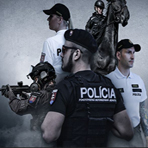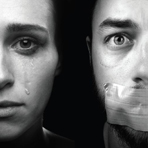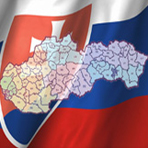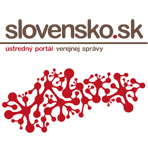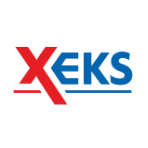6. International assessment of the level of corruption
Basic prerequisites for measuring the level of corruption
The international character of corruption reflects the high degree of danger of this phenomenon, which transcends national borders. Not even the most advanced democratic states in the European and global context are immune to corruption. Fraud and corruption reach enormous proportions and harm the interests of individuals, institutions, states and the Community as a whole.
International corruption level surveys show that the scale of corruption varies by country, but corruption harms society as a whole by preventing economic and social development, undermining the rule of law, reducing investment, negatively affecting the level of public finances and weakening democratic principles and institutional foundations company. The problem of corruption is rightly perceived as socially dangerous and permanent in terms of its occurrence, so preventive initiatives and the fight against corruption can be considered the greatest challenges of the present.
An essential feature of any corrupt behavior is a targeted direction to gain undue advantage to which there is no legal entitlement. The driving motive for such behavior is the human desire for money and personal gain inherent in each human community, but the volume and extent of corruption varies across geographical regions and countries. Its difference is influenced mainly by historical background, corruption climate, and political, economic and social factors. In some countries, the incidence of corruption is at the level of a random phenomenon, in others it grows into organized crime penetrating into power, economic and political structures and the entire government system.
Corruption is a phenomenon that cannot be precisely defined or measured. In determining the extent and identification of corruption, it is most often based on its criminal qualification, given the clarity of its definition. However, each country has its own criminal code subject to national, legal, economic, historical and cultural influences, which results in the scope and content of corruption offenses being defined differently. The criminal classification of corruption in international comparisons thus implies difficulties and limits the validity of the measurement of its level, evaluation and mutual comparison.
Assessment of corruption by international organizations
The seriousness of the consequences of corruption is also being recognized by many international organizations and institutions that are stepping up efforts to adopt effective tools to coordinate action to eliminate corruption and its negative impact on economic and social relations at national and international levels.
International documents and recommendations adopted by the Organization for Economic Cooperation and Development, the United Nations, the Council of Europe and the European Commission play an important role in this process. The aim of transnational organizations is to ensure the creation of a single anti-corruption framework to prevent spreading of this negative social phenomenon by developing international policies, adopting international conventions and channeling anti-corruption reforms.
International organizations and institutions also assist in the process of measuring and comparing corruption by developing and applying mechanisms for evaluating the implementation of anti-corruption conventions. In the context of compliance with the obligations arising from international conventions, the institutional and legislative arrangements for combating the crime of corruption, as well as the progress achieved by the Member States in the effective use of the instruments of the fight against corruption, are evaluated. The outcome of these initiatives is to create the conditions for an international assessment of the level of corruption and comparative analyzes with the potential to use their conclusions to shape the anti-corruption environment of countries in interaction with national needs and recommendations of international organizations.
The Slovak Republic is a party to all major international conventions relating to the fight against the crime of corruption. In connection with the implementation of the adopted conventions and the implementation of international recommendations, significant legislative and institutional changes have been made in the Slovak Republic in the last decades, aimed at preventing and sanctioning the crime of corruption.
Corruption Perception Index
Complementary indirect sources of information about crimes in general are opinion polls concerning security feelings and threats from crime, resp. surveys on trust in the police and criminal justice institutions. There are a number of surveys dealing with this phenomenon in the effort to measure the level of corruption and its perception by society. One of the best known and most cited in the context of the worldwide comparison of the level of corruption is the Corruption Perception Index (CPI). The Corruption Perceptions Index was introduced by Transparency International, an international non-governmental organization, for the measurement, evaluation and international comparison of corruption levels as early as 1995.
The Corruption Perceptions Index is compiled annually on the basis of the results of an international survey of professionals, consisting of entrepreneurs, analysts and public administration experts. In particular, according to Transparency International surveys, national respondents assess the ability of government institutions to penalize corruption, the effectiveness of anti-corruption measures, the extent of corruption in various areas of government, transparency of institutions, misuse of public funds, as well as violations of integrity and misuse of public functions.
The Corruption Perception Index is set on a scale from 0 to 100 according to the subjective opinions of the professional public, which in turn implies the possibility of comparing and evaluating the state of perception of corruption between countries. 0 is assigned the status of a highly corrupt country, and a value of 100 indicates zero corruption in the country. The achieved perceptions of the level of corruption below 50 indicate serious corruption problems of the country.
In countries that have embarked on the path of democracy, there has only recently been room for great corruption, but there is also society-tolerated corruption, which can be described as minor corruption and which is widespread in various spheres of society such as health, education, judiciary, etc. The results of international surveys of corruption perception rates are lower in these countries compared to countries with a developed degree of democracy.
Assessment of corruption rate by Eurobarometer
Since 1974, the European institutions have been commissioning regular opinion polls in all Member States of the European Union. Eurobarometer. Eurobarometer data collection methodology and data sources are different from the Corruption Perceptions Index, which also implies different survey results. The Eurobarometer evaluation methodology is based on data from a representative sample of around 1000 general public respondents, so Eurobarometer results are more likely to take into account, in particular, small corruption such as bribes of citizens.
On the other hand, the Corruption Perceptions Index, which is based on surveys of the professional public, reflects the more extensive corruption that may occur, for example, in public procurement. The Corruption Perception Index and the Eurobarometer do not contradict each other despite the different perspectives on corruption and related results. On the contrary, by taking into account other forms of corruption, the data come from different sources and from different respondents provide an overall picture of the current state and trends of corruption in individual countries.
Based on data from the international Eurobarometer survey, the results of the Corruption Perceptions Index, as well as other international measurements of the level of corruption, it can be stated that considerable efforts are needed in Slovakia to eliminate corruption and build an integrity culture. Corruption cannot be eliminated altogether, therefore the aim of anti-corruption efforts is not to achieve absolute remedy, but to substantially eliminate this crime and increase citizens' confidence in the government apparatus, state authorities and the entire public administration.
However, the responsibility for effective measures in the field of the elimination of corruption is not guaranteed by a single institution, each individual must be responsible for the success of the struggle in this field by his or her stance of resolute refusal and the communication to the law enforcement authorities of any indications of corrupt practices.
Remember
- Corruption is a phenomenon that cannot be precisely defined or measured. When determining the extent and identification of corruption, it is most often based on its criminal qualification.
- International organizations, such as the Organization for Economic Co-operation and Development, the United Nations, the Council of Europe and the European Commission, assist the international evaluation process by developing and implementing mechanisms to assess the level of implementation and effective application of anti-corruption tools.
- The Corruption Perception Index (CPI) is the best known and most cited in the context of international comparisons of corruption levels.
- The Eurobarometer is based on data from a representative sample of the general public, which mainly takes into account small corruption, while the Corruption Perceptions Index reflects the level of large corruption.
- International organizations and institutions play an important role in the international assessment of the level of corruption and the development of comparative analyzes with the potential to use their conclusions in shaping national policies.



